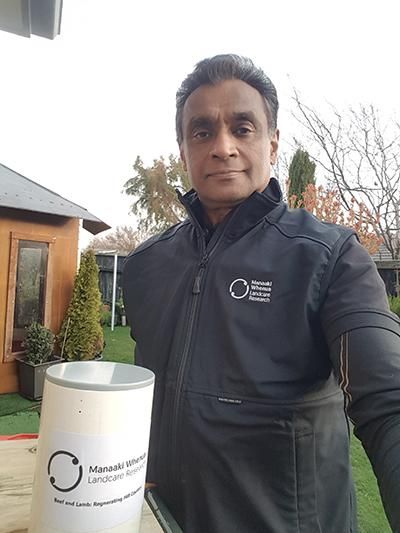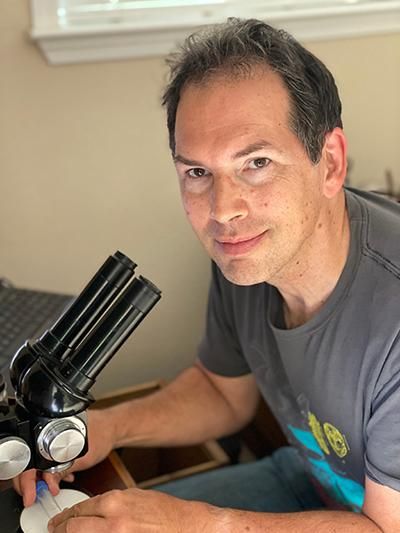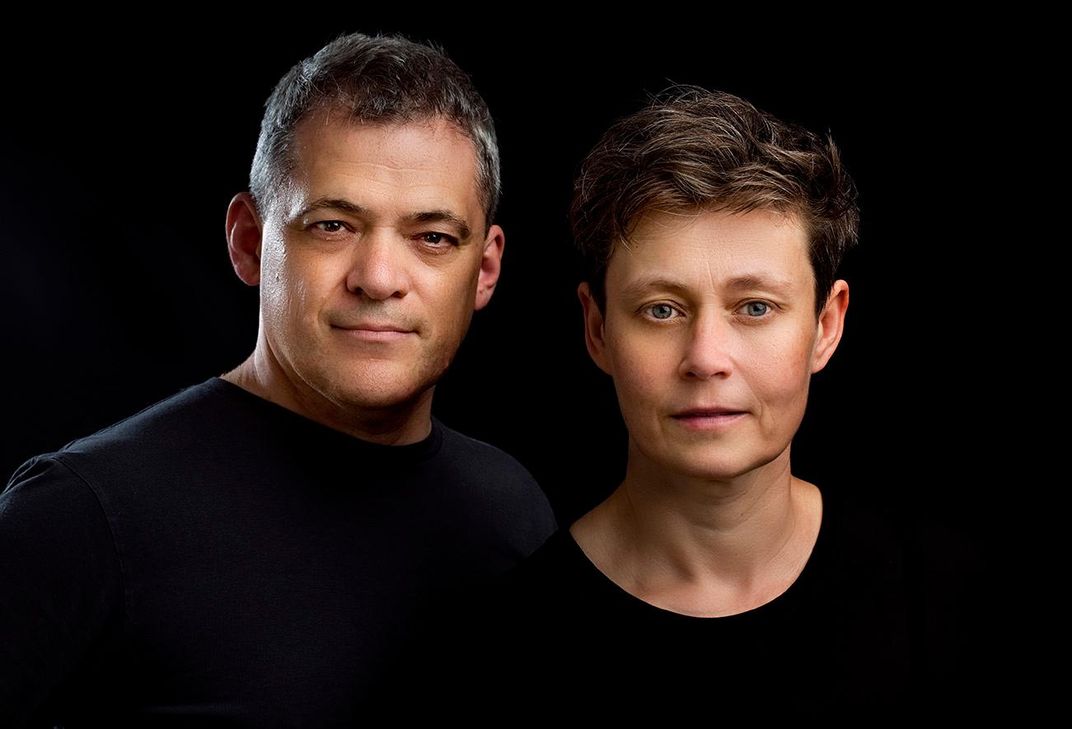Five Scientific Achievements That Happened During Coronavirus Lockdown
Quarantine did not stop these innovators from discovering new species, creating the elusive fifth state of matter remotely, and more
/https://tf-cmsv2-smithsonianmag-media.s3.amazonaws.com/filer/4e/87/4e87f51d-e8f3-4d59-abf2-d316eac21b4b/dr_amruta-main.jpg)
On the afternoon of March 23, Jagath Ekanayake was finishing a cup of tea when his supervisor, James Barringer, told him to clear out. Ekanayake, a scientist, engineer and inventor at Manaaki Whenua - Landcare Research Institute in New Zealand, is in charge of collecting data on soil moisture and temperature with wireless sensors. He was about to embark on a two-year ecological study to measure the health of soil on several farms stretching across country when the government moved to alert level four and his experiment was put on hold indefinitely. Ekanayake spent the remainder of the afternoon going back and forth from his lab to the parking garage—carrying his multimeter, his soldering station, his oscilloscope and numerous bags of cables, wires and circuit boards. He filled his trunk and slowly drove away.
By the first week of April, roughly four billion people—half the global population—were in lockdown. The lockdown had the impact of a blunt force injury, leaving researchers all over the world reeling and disoriented. At the University of Antioquia in Colombia, herpetologists working with critically endangered reptiles carried the temperature- sensitive unhatched eggs to their homes. NASA engineers quickly learned to pilot the Mars Curiosity rover remotely.
Anyone would be forgiven for feeling lethargic and overwhelmed during a global pandemic. But some among us were wildly productive. They found ingenious workarounds—inventing, cataloging and even making significant scientific breakthroughs, from the comfort of home. In England, a team of archeologists at the University of Exeter analyzing images generated by LiDAR sensors, and partnering with volunteers working from home, impressively discovered more than 20 Roman settlements buried across Devon and Cornwall—all on their laptops.

Ekanayake’s garage was too cold to work in, so the engineer spent his confinement constructing a wireless sensor network on his living room table. Agricultural production ravages ecosystems; his network pinpoints terrain that can deliver high yield crops with minimal fertilizer, preserving New Zealand’s unique biodiversity. Ekanayake ran out of space on the table, so he dragged all the family’s furniture out and used the floor. Eventually, his wife, Chitra, let him use the kitchen counters too. Over the course of the lockdown, Ekanayake would happily work 12-hour days, boring dozens of holes in his front yard with a handheld auger, then burying and testing each sensor he’d constructed.
Roughly 11,000 miles away, Amruta Gadge, a quantum physicist at the University of Sussex in England, was bitterly disappointed to learn that her lab was closing indefinitely. She told her husband, a theoretical physicist, that the lockdown would derail her career. Several weeks later, working from home, she became the first scientist in history to create a Bose-Einstein Condensate (BEC)—the exotic, elusive fifth state of matter—remotely.
The condensate is a cloud of rubidium atoms that has been cooled to nanokelvin temperatures. The procedure involves several rounds of radio and laser cooling. During the process, the clump of atoms is held into place in a “trap” of electromagnetic fields, displayed inside its ultra-high vacuum chamber like a tiny Baked Alaska. When the minimum possible energy level is reached, the particles slow to a near stop and merge, behaving as a single wave with weird quantum properties. Still stuck in her living room two miles from her lab, Gadge controls the conditions of the BEC from her computer.
Gadge’s leap into quantum physics was (appropriately) random. She had entered a university program planning to study another field, but had been accidently placed in the wrong module. Nonetheless, the moment she entered the lab she was hooked. “I liked doing things by hand—it was all very cool,” she says. “I got to play.”
Her lockdown triumph hints at a near-future of remote lab work in far-flung, inhospitable environments, such as outer space or the deep sea. But at the moment, Gadge is focused on her next objective - using the condensate as an ultra-efficient sensor to measure the magnetic fields holding it in place, with an eye towards advancing new technologies in neuroimaging.

Brian Brown’s heart leapt when the California lockdown was announced. “It seemed like a dream come true,” says the chief entomology curator at the Natural History Museum of Los Angeles. He loves his job, which he has held for 28 years, but it involves meetings. The lockdown was an opportunity to focus on lab work with no distractions. He was able to prepare long in advance, bringing home his microscopes and plenty of specimens, particularly of Phorid flies. Brown’s passion for flies has driven him halfway around the world. He’s written countless papers on them. He’s examined specimens preserved in 100-million-year-old pieces of amber. In his spare time, he runs a blog called flyobsession.net where he touts their admirable qualities, like their diversity. “They can be parasites, predators, scavengers, fungus feeders,” he says. “They’re the ones who pollinate cacao plants, which is the source of chocolate!”
If flies are his guilty pleasure, the lockdown gave him an excuse to indulge . . . perhaps too much. Brown’s initial enthusiasm for the confinement has started to flag; over time, he’s been surprised to find that he misses interacting with people. But working remotely with assistant entomology collection manager Lisa Gonzalez, Brown has discovered nine new species of phorid flies in just under two months, bringing his personal total to 600 new insect species discovered. There’s a downside to being so prolific. “You start running out of things to use for names” he says.

When she was seven years old, Stéphanie Lizy-Destrez received an illustrated book about Marie Curie from her grandfather. She was a shy child in Villars-sur-Var, a village of less than 100 people in the French Alps. She had few friends. She spent long stretches of time looking up at the sky. Far from the city lights, shooting stars were visible at night. After closing the book, she dreamt of her future. “Marie Curie was the only girl among a lot of guys and she succeeded; she ran experiments, she did testing,” Lizy-Destrez says. “[I thought], yeah I can do that too.”
Years later, in March 2020, Lizy-Destrez was in the midst of coordinating a Mars mission simulation with an international team—representatives from NASA, Mars Desert Research Station (MDRS) and Roscosmos (Russia’s space agency). As a space researcher at ISAE-SUPAERO, an aeronautics university in Toulouse, Lizy-Destrez’s study was scheduled to start within days. She was investigating the psychological impact of confinement and isolation on crew members during long duration missions. The participants—three men and three women—had been selected and were about to be sealed into a Moscow facility for eight months. Everyone was ready. Then French President Emmanuel Macron announced the confinement. Lizy-Destrez pivoted quickly. Two days into lockdown she began a modified version of the Mars study using 60 of her students.
Her pupils performed tasks, completed psychological testing and kept daily journals on their computers. Strictly confined to their small dormitory rooms, they made ideal test subjects. When French news media reported on her work, she was contacted by members of the public wanting to volunteer. After a careful selection process, she expanded the study. The average space mission simulation has four to six participants. Lizy-Destrez signed up over a hundred subjects, ranging in ages from 13 to 50 years old—making hers the largest space mission study in history. Still barred from her lab, she’s now analyzing her findings.

At Ocean Space, formerly the Church of San Lorenzo in Venice, Ann-Sofi Rönnskog and John Palmesino were putting the finishing touches on “Oceans in Transformation”—the result of three years of hard work, commissioned by TBA21-Academy.* The 30-screen video installation consists of raw oceanographic data—current and historical—that the pair has collected and converted into images. The images are then layered, one on top of the other, to striking effect. The art piece required collaboration with scientists all over the world, from small labs to large research institutions (including the Smithsonian). In late February, only weeks before their exhibition was to open, the Finland-based citizen scientists were forced to flee Italy.
As human activity decreased, shoals of tiny fish began to return to the deserted canals surrounding the church. Similarly, changes appeared in the marine data the pair continued to accumulate. As the lockdown unfolded, they noted the rapid shift, worldwide, in carbon and nitrogen oxide levels. It was all right there—unfolding on their laptops, visible in the atmospheric datasets they’d acquired from a European Space Agency satellite. Trapped inside during March 2020, animal tracking GPS data enabled them to “see” the migration of a colony of Emperor penguins, marching steadfastly across Antarctic sea ice.
Rönnskog and Palmesino—both architects by trade—have continued to study the marine environment closely, collecting and cataloging everything they can. Still locked down in Finland, their passion for documenting the anthropocene through the medium of oceanographic data is all-consuming. “It takes up all the time we’re awake,” says Rönnskog.
Lizy-Destrez can relate. She loves being at home with her space engineer husband; she says their children are excellent colleagues. “I’ve always worked a lot—every day, every night, every weekend,” she says. “The confinement has had no [impact] on my time.”
Fifteen years ago, Ekanayake, always inventing, developed a system to measure the moisture retention properties of soil. Later he built an infiltrometer to measure the rate of soil water seepage. He currently has four patents in progress. He estimates that his efficiency increased 300 percent during lockdown.
Finally back in the lab, his evening hours are spent on a new project. He’s building a portable, battery powered spectrometer to identify urea and nitrogen in water. And next on the horizon? “Now that I’m 65, retirement is one option,” he says. “But I would like to continue working until I die.”
That probably comes as no surprise to his colleagues, and his wife.
* Editor's Note, July 21, 2020: A previous version of this article incorrectly stated that "Oceans in Transformation" was on exhibit at the Church of San Lorenzo in Venice, when, in fact, TBA21-Academy took over the church and named the venue Ocean Space. The story has been edited to correct this fact.
/https://tf-cmsv2-smithsonianmag-media.s3.amazonaws.com/accounts/headshot/Dieynaba_Y.jpg)
/https://tf-cmsv2-smithsonianmag-media.s3.amazonaws.com/accounts/headshot/Dieynaba_Y.jpg)